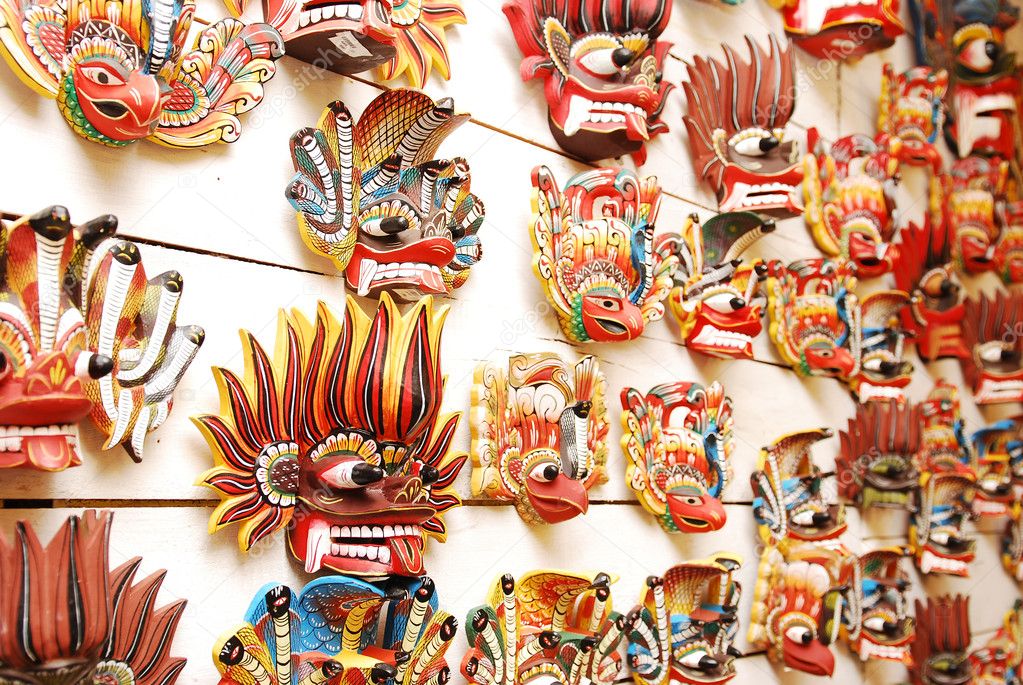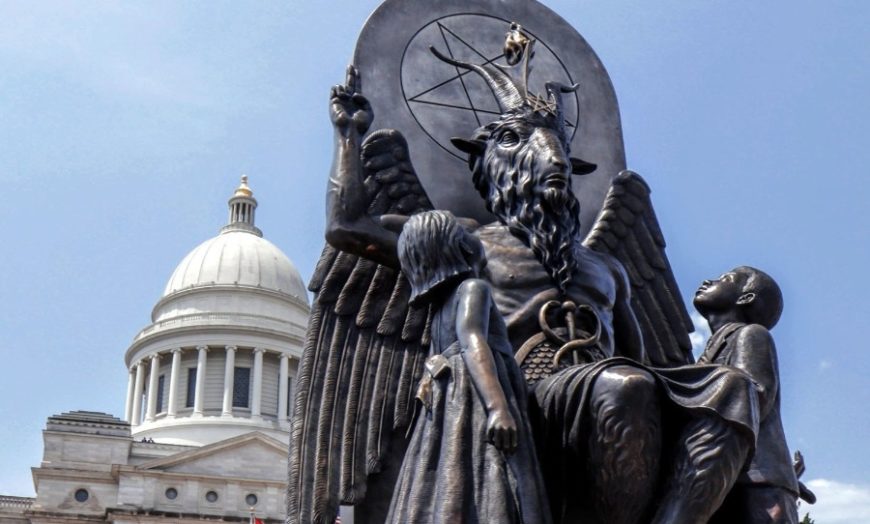Have you ever wondered why the image of a horned, red-skinned creature with a pitchfork is so prevalent in our collective imagination? This figure, often associated with evil, sin, and darkness, is the devil, a potent symbol that has captivated artists and storytellers throughout history. From ancient mythology to modern media, the devil has taken on many forms, reflecting societal anxieties and the darker aspects of human nature.

Image: nl.depositphotos.com
The devil’s pervasive influence in the arts and popular culture is a testament to its enduring power as a symbol. It represents the seductive allure of temptation, the struggle between good and evil, and the human capacity for transgression. Understanding the devil’s multifaceted role in these realms can offer insights into our deepest fears, desires, and aspirations.
The Devil in Mythology and Religion
A Serpent in the Garden: The Devil in Early Christianity
The devil’s origins can be traced back to ancient Mesopotamia, where the god Marduk battled a demonic force named Tiamat, representing chaos and darkness. This narrative of a cosmic struggle between good and evil was adopted and reinterpreted by early Christians, who saw Satan, the fallen angel, as the ultimate embodiment of evil. In the biblical story of Genesis, Satan, disguised as a serpent, tempts Eve to eat the forbidden fruit, leading to humanity’s expulsion from paradise. This account solidified the devil’s reputation as a cunning deceiver and the instigator of sin.
The Devil in Medieval Art and Literature
During the Middle Ages, the devil became a popular subject in religious art and literature. Paintings, sculptures, and stained glass windows depicted Satan as a grotesque, monstrous creature, often with horns, wings, and a forked tail. These depictions served as powerful visual reminders of the consequences of sin and the eternal damnation that awaited those who succumbed to the devil’s influence. Literature also embraced the devil’s presence, with plays like Dante Alighieri’s Inferno and Christopher Marlowe’s Doctor Faustus depicting the devil’s treacherous power and the tragic fates of those who made deals with him.

Image: happymag.tv
The Devil in Modern Art and Literature
Modernist reinterpretations: The Devil as a Psychological Force
The 20th century witnessed a shift in the portrayal of the devil in art and literature. Modernist artists and writers began to see the devil as a more complex and psychological force, representing inner demons, hidden desires, and the darker aspects of human nature. In his novel The Master and Margarita, Mikhail Bulgakov depicts the devil as a charismatic and alluring figure who challenges societal norms and exposes hypocrisy. Similarly, in his play The Crucible, Arthur Miller uses the Salem witch trials as a backdrop to explore the dangers of mass hysteria and the destructive power of accusations.
The Devil in Contemporary Culture: From Horror to Pop Music
The devil continues to exert a powerful influence on contemporary popular culture. Horror films and video games often feature demonic characters, exploiting our primal fear of the unknown and the supernatural. However, the devil’s image is also appropriated in popular music, fashion, and even advertising, where it often represents rebelliousness, defiance, and a rejection of conventional norms. From heavy metal bands to pop stars, the devil’s image is used to create a sense of danger, excitement, and even empowerment.
Exploring the Devil’s Enduring Appeal
The Devil as a Catalyst for Storytelling
The devil’s enduring presence in art and popular culture can be attributed to its versatility as a narrative catalyst. As a figure of temptation and rebellion, the devil offers writers and artists a powerful tool for exploring themes of sin, redemption, and the human condition. By confronting the devil’s influence, characters can make difficult choices, experience transformative journeys, and ultimately confront their own inner demons.
The Devil as a Mirror to Society
The devil’s image also reflects societal anxieties and fears. From the medieval belief in the devil’s power to tempt and corrupt to the modern anxieties surrounding technological advancements and the loss of traditional values, the devil serves as a conduit for expressing our deepest fears and concerns. By confronting these fears and anxieties through art and literature, we can gain a better understanding of ourselves and the world around us.
Confronting the Devil Within
The devil, whether portrayed as a supernatural being or a psychological force, represents the darker aspects of ourselves. By exploring the devil’s role in art and popular culture, we can confront our own inner demons, explore the complexities of human nature, and ultimately strive to become better versions of ourselves. The devil’s influence, while often attributed to external forces, ultimately lies within us all, challenging us to constantly confront our darkest impulses and strive for greater enlightenment.
Devil In The Arts And Popular Culture
Conclusion
From its origins in ancient mythology to its contemporary presence in popular culture, the devil has played a multifaceted and enduring role in shaping our understanding of good and evil, temptation and rebellion, and the human condition. By examining the devil’s presence in art and literature across various historical periods, we can gain valuable insights into our deepest fears, desires, and the challenges that we face as individuals and societies. The devil’s enduring influence reminds us that the battle between good and evil is never truly over, and that the choices we make have profound consequences, both personally and collectively.






